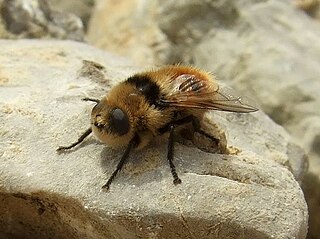
Carnivora is an order of placental mammals that have specialized in primarily eating flesh. Its members are formally referred to as carnivorans, though some species are omnivorous, such as raccoons and bears, and very few species such as pandas are specialized herbivores. The word carnivore is derived from Latin carō 'flesh' and vorāre 'to devour', and refers to any meat-eating organism. The order Carnivora is the fifth largest order of mammals and one of the more successful members of the group, as it comprises at least 279 species.

Lizards are a widespread group of squamate reptiles, with over 6,000 species, ranging across all continents except Antarctica, as well as most oceanic island chains. The group is paraphyletic as it excludes the snakes and Amphisbaenia; some lizards are more closely related to these two excluded groups than they are to other lizards. Lizards range in size from chameleons and geckos a few centimeters long to the 3 meter long Komodo dragon.

Flowering plants, also known as Angiospermae, meaning enclosed seeds in Greek, are the most diverse group of land plants with 64 orders, 416 families, approximately 13,000 known genera and 300,000 known species.

The even-toed ungulates are ungulates—hoofed animals—which bear weight equally on two of their five toes: the third and fourth. The other three toes are either present, absent, vestigial, or pointing posteriorly. By contrast, odd-toed ungulates bear weight on an odd number of the five toes. Another difference between the two is that even-toed ungulates digest plant cellulose in one or more stomach chambers rather than in their intestine as the odd-toed ungulates do.

Catfish are a diverse group of ray-finned fish. Named for their prominent barbels, which resemble a cat's whiskers, catfish range in size and behavior from the three largest species alive, the Mekong giant catfish from Southeast Asia, the wels catfish of Eurasia, and the piraíba of South America, to detritivores, and even to a tiny parasitic species commonly called the Candiru, Vandellia cirrhosa. Neither the armour-plated types nor the naked types have scales. Despite their name, not all catfish have prominent barbels or "whiskers". Members of the Siluriformes order are defined by features of the skull and swimbladder. Catfish are of considerable commercial importance; many of the larger species are farmed or fished for food. Many of the smaller species, particularly the genus Corydoras, are important in the aquarium hobby. Many catfish are nocturnal, but others are crepuscular or diurnal.

Starlings are small to medium-sized passerine birds in the family Sturnidae. The name "Sturnidae" comes from the Latin word for starling, sturnus. Many Asian species, particularly the larger ones, are called mynas, and many African species are known as glossy starlings because of their iridescent plumage. Starlings are native to Europe, Asia and Africa, as well as northern Australia and the islands of the tropical Pacific. Several European and Asian species have been introduced to these areas as well as North America, Hawaii and New Zealand, where they generally compete for habitats with native birds and are considered to be invasive species. The starling species familiar to most people in Europe and North America is the common starling, and throughout much of Asia and the Pacific, the common myna is indeed common.

Botflies, also known as warble flies, heel flies, and gadflies, are a family of flies technically known as the Oestridae. Their larvae are internal parasites of mammals, some species growing in the host's flesh and others within the gut. Dermatobia hominis is the only species of botfly known to parasitize humans routinely, though other species of flies cause myiasis in humans.

Feliformia is a suborder within the order Carnivora consisting of "cat-like" carnivorans, including cats, hyenas, mongooses, viverrids, and related taxa. Feliformia stands in contrast to the other suborder of Carnivora, Caniformia.

In biological classification, taxonomic rank is the relative level of a group of organisms in a taxonomic hierarchy. Examples of taxonomic ranks are species, genus, family, order, class, phylum, kingdom, domain, etc.

Botrynema ellinorae is a species of hydrozoan in the family Halicreatidae.

Halitrephes maasi, commonly known on the internet as the firework jellyfish, is a species of deep sea hydrozoan of the family Halicreatidae. The most recent account of the jelly has been found at a depth of 4,000–5,000 feet (1,200–1,500 m) near the Revillagigedo Archipelago off Baja California Peninsula, Mexico.

Botrynema brucei is a common mid-water Arctic hydrozoan, of the family Halicreatidae.

Botrynema is a genus of hydrozoans in the family Halicreatidae.
Haliscera is a genus of hydrozoans in the family Halicreatidae.

Halicreas minimum is a species of deep sea hydrozoan of the family Halicreatidae. It is the only species in the monotypic genus Halicreas.
Haliscera bigelowi is a species of deep sea hydrozoan of the family Halicreatidae.
Haliscera conica is a species of hydrozoan belonging to the family Halicreatidae.
Haliscera racovitzae is a species of deep sea hydrozoan of the family Halicreatidae.

Homoeonema platygonon is a species of deep sea hydrozoan of the family Halicreatidae. It is the only species in the monotypic genus Homoeonema.
Varitentacula yantaiensis is a species of deep sea hydrozoan of the family Halicreatidae. It is the only species in the monotypic genus Varitentacula.


















